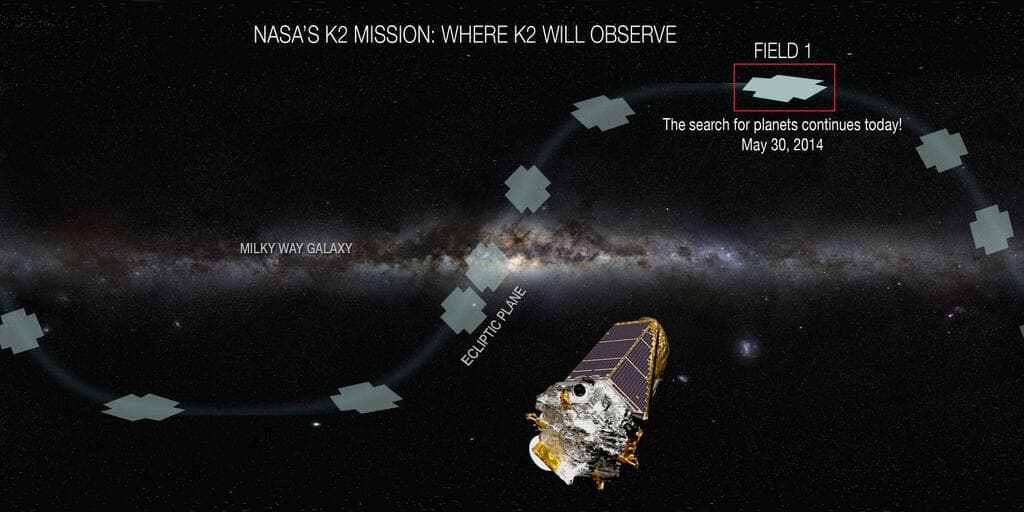NASA’s Kepler spacecraft, our most successful exoplanet hunter ever, is showing that (even with its two disabled reaction wheels) it can still detect new alien worlds. After the spacecraft lost the second wheel in May 2013, and the data collection in the original Kepler field ended, the mission was given a new name “K2 – Second Light”, highlighting the fact that the Kepler team didn’t lose hope.
Now, one of the K2 mission scientists is confident that more significant discoveries are still to come.
“K2 is a mission looking at the ecliptic and performing a variety of science, including exoplanets of course, but also star clusters, star forming regions, supernova searches, and solar systems objects,” Steve Howell, Kepler and K2 Mission Project Scientist, told FQTQ. “We are predicting 50 to 100 new high value exoplanets per year with K2.”
The “high value” exoplanets are those that orbit bright stars or nearby stars for which detailed follow-up can be performed and characterization achieved.
The latest significant discovery was made by the K2 mission in July 2015, when the spacecraft found a high value exoplanet named Kepler-452b, which is orbiting its parent star about 20 percent brighter than our Sun. The newly-found planet was dubbed a “bigger, older cousin” to Earth as it’s 60 percent larger in diameter than our world and has spent six billion years in the habitable zone of its star - longer than Earth. With the Kepler-452b discovery, the total number of confirmed planets has increased to 1,030.
“K2 has already found over 20 new exoplanets in its first few months of operation,” Howell said.
And more is yet to come. Howell predicts that the mission should last for another 2 to 3 years until the spacecraft runs out of fuel. Having in mind that it could detect 100 exoplanets every year, it gives us about 300 distant worlds that may be discovered.
The spacecraft is currently in a good shape overall and working well. The mission is currently in its sixth observing campaign which began on July 11 this year and will end on Oct. 3. The observation targets during this campaign include more than 28,000 stars, which can be searched for exoplanets and examined for a variety of astrophysical phenomena. The field of study includes BD-13 3695, a red giant star and V* IU Vir, a pulsating white dwarf.
Moreover, the campaign will study over 65 Trojan asteroids.
In April 2016, NASA will for the first time undertake a large-area microlensing survey during Kepler’s ninth campaign. Microlensing is a technique that can be used to detect long-orbital period planets, equivalent to our solar system planets like Jupiter and further out Neptune, around distant stars. It will observe a region of the sky in the direction of the Galactic bulge. This campaign will differ from the previous because it will be dedicated to the detection of gravitational microlensing events and the spacecraft boresight will point toward the direction of motion.
The K2 mission is managed by NASA’s Ames Research Center for NASA’s Science Mission Directorate.
Share This Article
